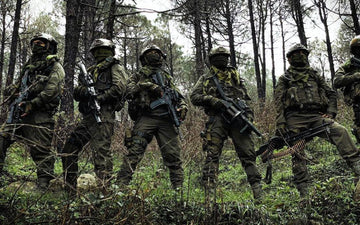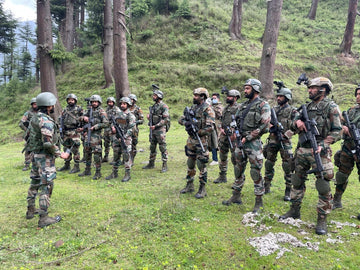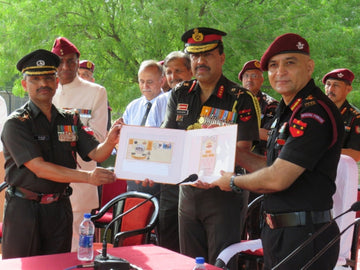The concept of an Agniveer transitioning into the highly esteemed role of a Para SF Commando is an intriguing proposition within the framework of the Indian Armed Forces. With the nation’s security dynamics evolving, the introduction of the Agnipath Scheme aimed to bolster troop strength and modernize recruitment practices. However, speculation arises about the feasibility of Agniveers progressing to elite roles, particularly in the Parachute Regiment’s Special Forces. This article delves into the challenges faced by Agniveers in becoming Para SF Commandos, highlighting the potential pathways, challenges, and recommendations for aspiring candidates.
Historical Context
The Indian Armed Forces have a rich history of elite units, with the Para Special Forces established to conduct specialized operations. These units have distinguished themselves in numerous operations, garnering respect and awe locally and globally. On the other hand, the Agnipath Scheme is a recent initiative introduced in 2022, designed to recruit civilians into the armed forces for a brief tenure of four years. It has stirred discussions about its long-term implications on recruitment and the operational readiness of the forces, particularly concerning elite roles like the Para SF Commando.
The significance of the Para SF stems from their ability to operate in unconventional warfare scenarios, where agility, stealth, and elite combat skills are critical. The evolution of modern warfare necessitates such forces; however, the path to joining these elite ranks is fraught with challenges, especially for Agniveers.
Limited Tenure: A Key Challenge
One of the most significant hurdles is the limited tenure of Agniveers. Recruited for a period of only four years, Agniveers find themselves constrained by the extensive training required for a Para SF Commando. The standard pathway into this elite unit involves:
- Initial Selection Process: This typically takes several months, where candidates undergo rigorous physical and psychological evaluations.
- Probationary Period: Post-selection, the probation phase lasts between three to six months, focusing on refining physical fitness, developing mental resilience, and instilling teamwork.
- Specialized Operations Training: Even after successfully completing the probation phase, candidates undertake transformative training focusing on guerrilla tactics, covert operations, and advanced survival skills.
The entirety of this training often spans two to three years — a timeline which far exceeds the limited four-year tenure under the Agnipath Scheme.
Training Rigor: The Need for Intense Preparation
The rigorous nature of Para SF training is another deterrent for Agniveers. Potential commandos are expected to reach peak physical fitness levels, endure extreme psychological tests, and master classified operational tactics.
- Physical Training: Candidates face severe physical tests such as endurance runs, obstacle courses, and combat drills. This training is highly demanding and requires unwavering dedication.
- Mental Conditioning: Psychological evaluations help ensure candidates can withstand the stress and unpredictability of special operations. Not all individuals may succeed in this high-stakes environment.
- Skill Acquisition: Learning unconventional warfare tactics, survival skills, and operational planning takes substantial time, dedication, and prior military exposure. For Agniveers, this steep learning curve presents significant difficulty due to their four-year commitment.
High Attrition Rate: The Reality of Selection
The selection process for the Para SF is notoriously challenging, with an attrition rate of around 80%. This staggering statistic underscores how physically and psychologically demanding the training is, leading to high dropout rates. For Agniveers, the likelihood of successfully making it through such a rigorous selection process is minimal, further complicated by their short tenure in the forces.
- Historical Context: Looking at past selection tests, it is evident that only a small percentage of candidates ultimately succeed. This could discourage Agniveer aspirants from pursuing this path.
Hence, despite their aspirations, the realities surrounding selection and training create a significant barrier for Agniveers hoping to become Para SF Commandos.
Policy Ambiguity: Lack of Clear Pathways
The current recruitment policies further complicate matters for Agniveers desiring to join elite units. While Agniveers can be posted to various regiments, specific pathways to elite roles like Para SF remain unclear. The recruitment guidelines fail to outline any direct route allowing Agniveers to transition into the Para SF during their initial four-year service.
Here's how the policy ambiguities manifest:
- Limited Information and Guidance: Aspiring Agniveers often lack access to information about opportunities within special forces. This lack of clarity can lead to disengagement and uncertainty about their future in the military.
- Transfer Policies: While Agniveers may be transferred to different units for organizational reasons, the absence of a definitive route to elite roles compounds the uncertainties around their career trajectories.
Potential Opportunities: A Glimmer of Hope
However, all may not be lost for aspiring Agniveers. Applications for elite roles like the Para SF may open after fulfilling the initial four-year tenure. Recent notifications from the Ministry of Defence state that:
- Re-induction Eligibility: One out of four Agniveers who successfully completes their tenure may have the opportunity to apply for further service within the forces. If re-inducted, they might be eligible to pursue roles in the Parachute Regiment, potentially leading to a Para SF position.
This policy change opens up alternative pathways for Agniveers, but it requires patience, perseverance, and strategic planning.
Solutions and Recommendations: Bridging the Gap
To address the challenges faced by Agniveers aspiring to join the Para SF, several strategies can be proposed:
- Pre-specialization Programs: Introducing dedicated preparatory programs for Agniveers aiming for elite units could enhance readiness and competitiveness.
- Mentorship Opportunities: Pairing Agniveers with current Para SF personnel for guidance could provide insight, inspiration, and practical training tips that align with the rigors of selection.
- Increased Transparency: Creating clear pathways and guidelines on transferring to elite units could empower Agniveers with the necessary information to pursue their aspirations actively.
- Fitness Training Support: Institutions could offer fitness camps during the Agniveers' service that mimic the requirements of Para SF training to help them better prepare if they choose to apply later.
Statistical Data and Research Insights
Understanding the landscape of opportunities and challenges surrounding Agniveers requires an examination of relevant statistics:
- Recruits Under Agnipath: The Indian Armed Forces estimate that around 46,000 Agniveers are recruited annually; a fraction may aim for elite status.
- Retention Rates: An analysis of existing personnel indicates that successful retention of re-inducted Agniveers in specialized roles remains a critical factor for future operational capability.
Such statistics highlight the pressing need for a nuanced approach in supporting these candidates through their journeys.
Challenges and Solutions: A Deeper Look
The pathway from Agniveer to Para SF is laden with numerous challenges. The overarching high attrition rate, policy ambiguities, and the inherently rigorous nature of selection stand as formidable barriers. However, potential solutions can mitigate these challenges:
- Enhanced Training Facilities: Establishing dedicated training facilities focused on preparing candidates for elite roles can ensure that those aiming to transition have access to excellent resources.
- Regular Workshops: Organizing workshops that focus on skills essential for success in the Special Forces could help bridge the skill gap identified in current selection processes.
Future Trends and Predictions: The Path Forward
As the Indian military structure evolves, it is paramount to align recruitment policies with contemporary operational needs. The future may witness:
- A Model Based on International Standards: The recruitment model may evolve to include features emulating specialized training found in other nations, combining Agniveers' roles more fluidly with elite forces.
- Adaptive Career Pathways: Increased focus on adaptive career pathways could lead to more Agniveers being prepared for elite roles, fostering a stronger connection between primary training and advanced operational capacities.
Government policies reflecting the changing landscape of warfare will yield pathways for more Agniveers to progress into units like the Para SF.
Conclusion
The possibility of an Agniveer becoming a Para SF Commando is complex and multifaceted. The challenges inherent in limited tenures, rigorous training requirements, and policy ambiguities create a daunting landscape for aspiring candidates. While opportunities do exist for those who complete their initial four years and re-induct into the forces, significant investments in training support, mentorship, and improved recruitment policies are essential.
As the Indian Armed Forces navigate this evolving framework, proactive measures to inspire and equip Agniveers will not only enhance the prospects of those seeking elite special forces roles but also strengthen the operational effectiveness and capability of our defence forces. The future of military recruitment and training is at a crossroads, and it is imperative that we recognize and cultivate the potential of every Agniveer aiming to serve their country at the highest levels.





